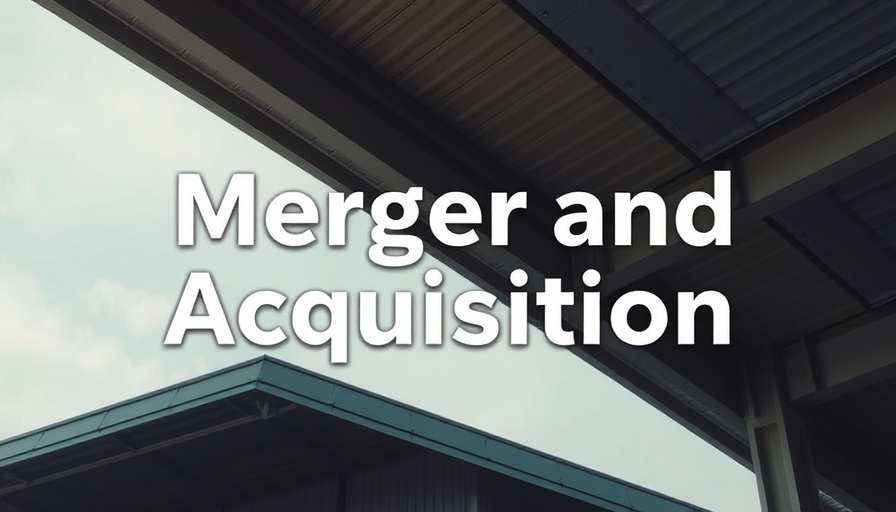
Transforming the Construction Landscape in New York
A significant shift is happening in the New York construction scene with FlatironDragados' recent merger of three prominent firms into a singular powerhouse. This strategic move not only aims to streamline operations but also to enhance project execution and client satisfaction in an industry often beset by inefficiencies and challenges. The newly formed entity promises to cultivate a more collaborative environment, embracing modern technologies and approaches that leverage the strengths of its constituent companies.
Why Mergers Matter in Today’s Market
In the ever-evolving construction industry, mergers like that of FlatironDragados represent a tactical response to increasing competition and project demands. By consolidating resources and expertise, companies can attract larger projects, lowering costs and improving outcomes. This merger is poised to enhance not only operational efficiencies but also innovative solutions, catering to a growing demand for sustainable construction practices.
The Benefits of Combined Expertise
The integration of three well-established firms allows the new entity to draw upon a wealth of experience and specialized knowledge. This can lead to improved safety protocols, increased project reliability, and push towards more environmentally responsible building practices. The diversity of skills amongst the merged firms can also facilitate the introduction of advanced technologies, such as AI and automation, which have the potential to revolutionize construction practices.
Implications for Homeowners and Contractors
This transformation within FlatironDragados could have promising implications for both homeowners and contractors. For homeowners, the merger could lead to faster project completion times and potentially reduced costs, as the newly unified organization may optimize workflow. By understanding the construction landscape, homeowners can better prepare for upcoming projects, ensuring they choose contractors that are part of a larger, more capable organization.
Future Trends: What to Expect
As we look to the future, the construction industry is likely to see increased consolidation as companies strive to remain competitive. The trend of merging expertise is expected to drive innovation, particularly in areas like green building and energy-efficient design. Furthermore, as government policies increasingly favor sustainable practices, firms that embrace this shift will be better positioned in a market that is moving towards eco-friendliness.
Understanding the Local Impact
For the New York community, the merger means not just growth but also job creation. As FlatironDragados expands its capabilities, it will likely require a larger workforce, benefiting the local economy. This shift can also forge stronger ties between construction firms and community stakeholders, emphasizing collaboration on local development projects that meet the unique needs of the area.
Decisions for Homeowners to Consider
Homeowners should take this opportunity to research and engage with contractors who are part of this new entity. By aligning with a company that leverages the expertise of three former competitors, homeowners can ensure they receive cutting-edge solutions and outstanding service. It's also an ideal time for contract negotiations, as these firms may offer competitive pricing while establishing themselves as leaders in the market.
Common Misconceptions Around Mergers
Many individuals hold misconceptions about mergers, perceiving them as a threat to local businesses. However, as evidenced by the FlatironDragados merger, the intent is often to pool resources and knowledge to foster growth, not to diminish competition. This new union aims to enhance service offerings, making it a win-win for both contractors seeking partnership and homeowners looking for reliable services.
As the construction industry continues to innovate, FlatironDragados stands at the forefront, redefining collaboration in an increasingly competitive field. For homeowners and contractors alike, engaging with this evolving landscape will be essential in reaping the benefits of a more integrated approach to construction.
Your next renovation project could greatly benefit from the advancements this merger brings. If you're considering renovations, take the time to explore contractors who are part of this newly formed giant in the industry — they will be equipped with the latest techniques and insights to guide your project toward success.
 Add Row
Add Row  Add
Add 




Write A Comment